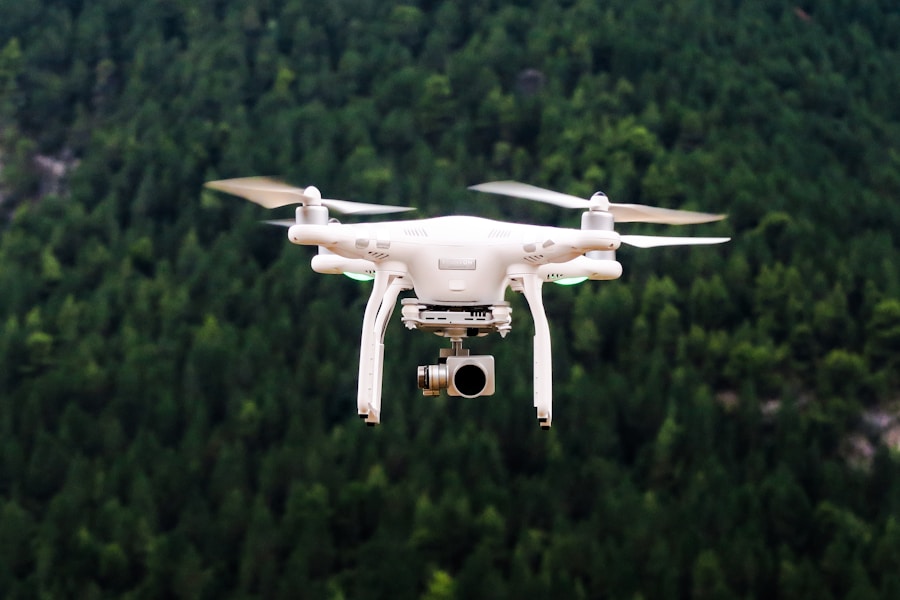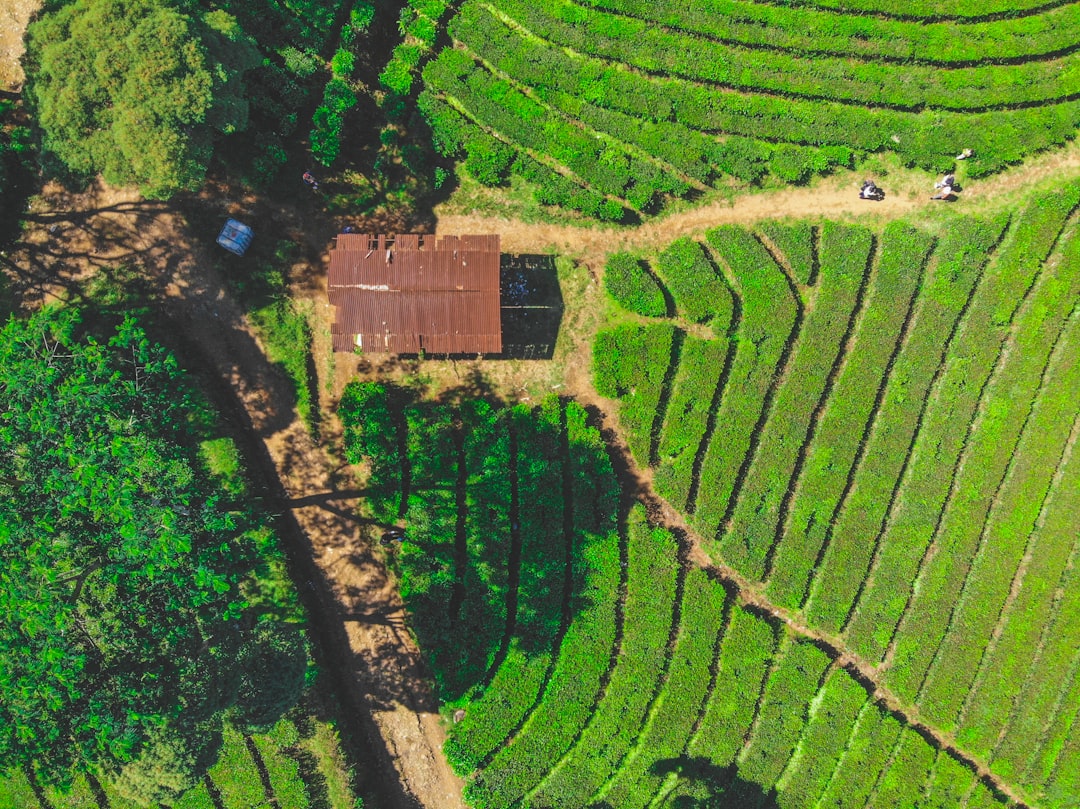Agricultural drones have become an essential tool for modern farming practices, providing farmers with valuable data and insights to improve crop yields and efficiency. However, with the increasing use of drones in agriculture, there are also inherent risks and liabilities that need to be addressed. Understanding these risks is crucial in providing effective insurance coverage for agricultural drones.
One of the primary risks associated with agricultural drones is the potential for accidents and collisions. Drones operate in close proximity to crops, buildings, and other equipment, increasing the likelihood of accidents that could result in damage to property or injury to individuals. Additionally, the use of drones in agricultural operations introduces the risk of data breaches and privacy violations, as drones collect sensitive information about crops and land.
These risks highlight the need for comprehensive insurance coverage that can protect farmers from potential liabilities associated with the use of agricultural drones. Another important consideration when it comes to understanding the risks and liabilities of agricultural drones is the potential for equipment malfunctions and technical failures. Drones are complex pieces of machinery that are susceptible to mechanical issues and software glitches, which could result in damage to crops or equipment.
Furthermore, the use of drones in agricultural operations may also pose environmental risks, such as the accidental release of chemicals or fertilizers. These risks underscore the importance of having insurance coverage that can mitigate the financial impact of such incidents and protect farmers from potential liabilities.
Key Takeaways
- Understanding the unique risks and liabilities of agricultural drones is crucial for providing effective insurance coverage.
- Tailoring insurance coverage to the specific needs of agricultural drones, such as crop monitoring and pesticide application, is essential for comprehensive protection.
- Navigating regulatory requirements for insurance for agricultural drones is important to ensure compliance and avoid potential legal issues.
- Evaluating the cost and benefits of insurance for agricultural drones can help in making informed decisions about coverage options.
- Choosing the right insurance provider with experience in agricultural drones can help in mitigating risks and maximizing coverage for this specialized industry.
Tailoring Insurance Coverage to the Unique Needs of Agricultural Drones
Protecting Against Physical Damage
Agricultural drones are often used to monitor and assess the health of crops, making them susceptible to damage from weather events, pests, and other environmental factors. As such, insurance coverage should include provisions for crop damage and loss, as well as coverage for any property damage that may occur as a result of drone operations.
Data and Privacy Concerns
In addition to protecting against physical damage, insurance coverage for agricultural drones should also address the unique data and privacy concerns associated with their use. Drones collect a wealth of sensitive information about crops and land, making them a potential target for data breaches and privacy violations.
Comprehensive Coverage for Farmers
As a result, insurance coverage should include provisions for data protection and privacy liability, ensuring that farmers are protected from potential legal and financial repercussions related to data breaches. By providing comprehensive coverage that addresses the unique needs of agricultural drones, farmers can have peace of mind knowing that their investment is protected.
Navigating Regulatory Requirements for Insurance for Agricultural Drones
Navigating the regulatory requirements for insurance coverage for agricultural drones is a critical aspect of providing effective protection for farmers. As the use of drones in agriculture continues to grow, there are evolving regulations and guidelines that govern their operation, which can impact the insurance requirements for drone operators. One of the primary regulatory considerations for insurance coverage for agricultural drones is compliance with aviation regulations.
In many jurisdictions, drones are classified as aircraft and are subject to aviation regulations, including requirements for liability insurance. Drone operators must ensure that their insurance coverage meets the minimum liability requirements set forth by aviation authorities, which may vary depending on the size and scope of their operations. In addition to aviation regulations, there are also specific regulations related to agricultural operations that can impact insurance requirements for drones.
For example, some jurisdictions may have specific requirements for liability insurance related to pesticide application or other agricultural activities conducted using drones. Navigating these regulatory requirements is essential in ensuring that farmers have the appropriate insurance coverage to comply with local laws and regulations.
Evaluating the Cost and Benefits of Insurance for Agricultural Drones
| Aspects | Metrics |
|---|---|
| Drone Type | Fixed-wing, multi-rotor |
| Insurance Coverage | Liability, hull damage, theft |
| Policy Cost | Premium, deductible |
| Coverage Area | Rural, urban, restricted zones |
| Claim Process | Documentation, investigation, settlement |
When it comes to providing effective insurance coverage for agricultural drones, it is important to carefully evaluate the cost and benefits of insurance options available. While insurance can provide valuable protection against potential liabilities, it is also important to consider the financial implications of different coverage options. One of the key factors to consider when evaluating the cost and benefits of insurance for agricultural drones is the potential financial impact of liabilities associated with drone operations.
Accidents, property damage, data breaches, and other risks can result in significant financial losses for farmers if they are not adequately covered by insurance. As such, it is important to weigh the potential costs of these liabilities against the premiums and coverage limits offered by different insurance providers. In addition to considering potential liabilities, it is also important to evaluate the benefits of insurance coverage for agricultural drones in terms of risk mitigation and peace of mind.
Insurance can provide farmers with a sense of security knowing that they are protected from potential financial hardships resulting from drone-related incidents. Furthermore, insurance coverage can also help mitigate the financial impact of regulatory fines and legal expenses that may arise from non-compliance with aviation and agricultural regulations.
Choosing the Right Insurance Provider for Agricultural Drones
Choosing the right insurance provider for agricultural drones is a critical step in ensuring effective protection for farmers. With the growing demand for insurance coverage for drone operations, there are an increasing number of providers offering specialized policies tailored to the unique needs of agricultural drones. One of the key considerations when choosing an insurance provider for agricultural drones is their experience and expertise in insuring drone operations.
It is important to work with an insurance provider that has a deep understanding of the risks and liabilities associated with agricultural drones and can offer tailored coverage options that address these specific concerns. Additionally, it is important to consider the financial stability and reputation of potential insurance providers, as well as their track record in handling claims related to drone operations. In addition to experience and reputation, it is also important to consider the range of coverage options and policy features offered by different insurance providers.
Farmers should look for providers that offer comprehensive coverage options that address a wide range of potential liabilities, including crop damage, property damage, data breaches, and privacy violations. Furthermore, it is important to consider the flexibility and customization options available from different providers, as well as their ability to adapt coverage to evolving regulatory requirements.
Mitigating Risks and Maximizing Coverage for Agricultural Drones
Mitigating risks and maximizing coverage for agricultural drones requires a proactive approach to risk management and insurance planning. By taking steps to identify potential risks and liabilities associated with drone operations, farmers can work with their insurance providers to tailor coverage options that provide comprehensive protection against these specific concerns. One effective strategy for mitigating risks and maximizing coverage for agricultural drones is to implement best practices for drone operations and safety protocols.
By establishing clear guidelines for drone use, maintenance, and data management, farmers can reduce the likelihood of accidents, equipment malfunctions, and data breaches that could result in liabilities. Additionally, by demonstrating a commitment to safety and compliance with regulations, farmers may be able to negotiate more favorable terms and premiums with their insurance providers. Another important aspect of mitigating risks and maximizing coverage for agricultural drones is ongoing communication and collaboration with insurance providers.
By maintaining open lines of communication with their insurers, farmers can stay informed about changes in regulations, coverage options, and risk management strategies that can help optimize their insurance coverage. Furthermore, by regularly reviewing their insurance policies and making adjustments as needed, farmers can ensure that they have adequate protection against evolving risks associated with drone operations.
Ensuring Comprehensive Protection with Insurance for Agricultural Drones
Ensuring comprehensive protection with insurance for agricultural drones requires a holistic approach to risk management and insurance planning. By addressing potential liabilities from all angles and working with experienced insurance providers, farmers can create a comprehensive insurance strategy that provides effective protection against a wide range of risks associated with drone operations. One key aspect of ensuring comprehensive protection with insurance for agricultural drones is to consider all potential liabilities associated with drone operations.
This includes not only physical damage to crops and property but also data breaches, privacy violations, environmental risks, and regulatory fines. By working with their insurance providers to identify these potential liabilities, farmers can tailor their coverage options to address each specific concern. In addition to addressing potential liabilities, ensuring comprehensive protection with insurance for agricultural drones also requires a proactive approach to risk management.
Farmers should implement robust safety protocols, data security measures, and compliance strategies to minimize the likelihood of incidents that could result in liabilities. By taking steps to mitigate risks at every stage of drone operations, farmers can create a safer working environment while also reducing their exposure to potential liabilities. In conclusion, providing effective insurance coverage for agricultural drones requires a thorough understanding of the risks and liabilities associated with drone operations, as well as a proactive approach to tailoring coverage options that address these specific concerns.
By navigating regulatory requirements, evaluating cost and benefits, choosing the right insurance provider, mitigating risks, and ensuring comprehensive protection, farmers can create a comprehensive insurance strategy that provides effective protection against a wide range of potential liabilities associated with drone operations. With the right insurance coverage in place, farmers can operate their drones with confidence knowing that they are protected from potential financial hardships resulting from accidents, data breaches, or other incidents related to drone operations.
FAQs
What is agricultural drone insurance coverage?
Agricultural drone insurance coverage is a type of insurance that provides financial protection for drones used in agricultural operations. It typically covers risks such as damage to the drone, liability for damage or injury caused by the drone, and loss of income due to drone-related issues.
Why is insurance coverage important for agricultural drones?
Insurance coverage is important for agricultural drones because it helps mitigate financial risks associated with drone operations. Drones used in agriculture are exposed to various hazards such as crashes, equipment malfunctions, and liability issues. Insurance coverage provides peace of mind and financial protection in the event of such incidents.
What are the key components of effective insurance coverage for agricultural drones?
Effective insurance coverage for agricultural drones typically includes coverage for physical damage to the drone, liability coverage for third-party property damage or bodily injury, coverage for loss of income due to drone-related issues, and coverage for theft or loss of the drone.
How can agricultural drone operators obtain insurance coverage?
Agricultural drone operators can obtain insurance coverage for their drones by contacting insurance providers that offer specialized drone insurance policies. These providers may offer tailored coverage options specifically designed for agricultural drone operations.
What factors should agricultural drone operators consider when selecting insurance coverage?
When selecting insurance coverage for agricultural drones, operators should consider factors such as the value of the drone, the specific risks associated with their operations, the coverage limits and deductibles offered, and the reputation and reliability of the insurance provider. It is important to choose coverage that aligns with the unique needs of agricultural drone operations.








